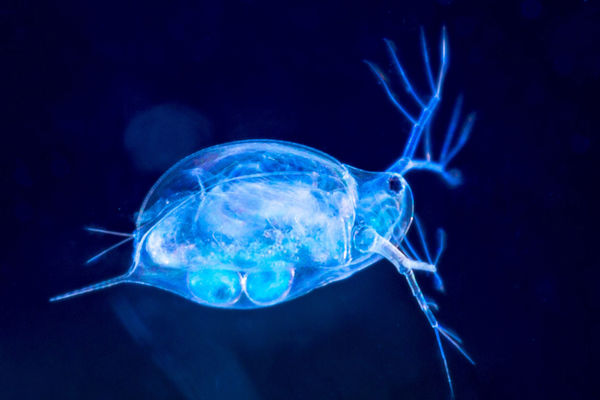

Michael Pfrender sits facing a whiteboard in his lab at the Galvin Life Science Center. He’s discussing the genomics of Daphnia – water fleas, found in every standing body of water in the world – and has a tendency to sketch when he speaks.
“You want to see some of them?” he asks. “That’s the fun part, right?”
At the back of the lab, two beakers sit on a table near a microscope. There isn’t much to see at first glance. Even leaning in, Daphnia are so small they look like bouncing flecks in the water, frantically trying to keep afloat.
Pfrender dips an eyedropper into one of the beakers, releases a drop of water onto a slide and slips it under the microscope for a closer look.
There she is.
Portly with a round, neckless head and antennae sprouting from either side, she is translucent – her organs visible within the razor-thin outline of her body. She also happens to be pregnant, her eggs equally visible, and encased in little pouches.
Pfrender, associate professor of evolutionary and ecological genomics in the Department of Biological Sciences and the director of the Genomics and Bioinformatics Core Facility, has studied the genomics of Daphnia for more than two decades. He co-authored the landmark paper documenting the first genome sequence of a Daphnia species – as well as the second, new and improved genome sequence of Daphnia pulex (D. pulex) published earlier this year.
Read the full story here.